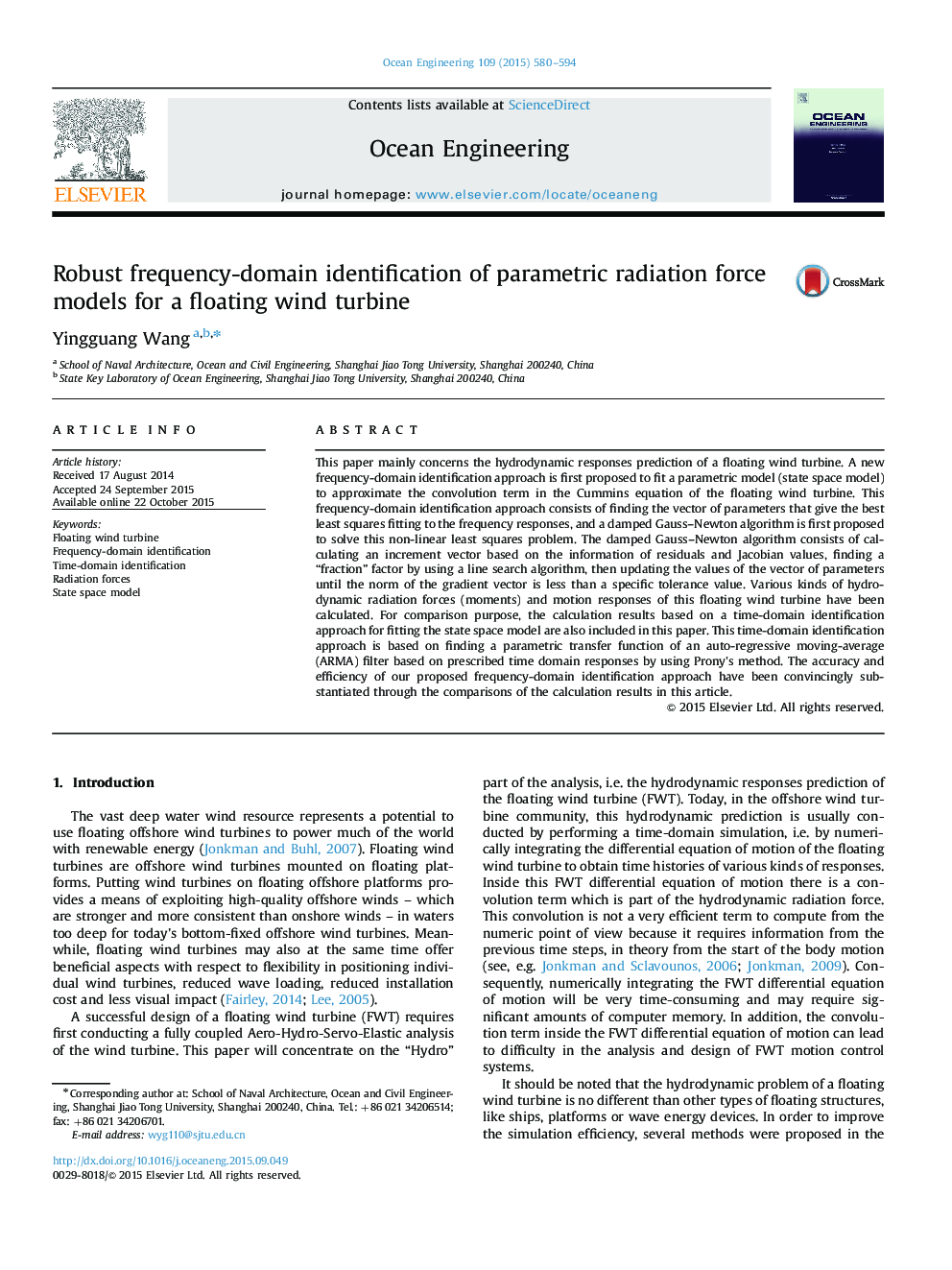| Article ID | Journal | Published Year | Pages | File Type |
|---|---|---|---|---|
| 8065320 | Ocean Engineering | 2015 | 15 Pages |
Abstract
This paper mainly concerns the hydrodynamic responses prediction of a floating wind turbine. A new frequency-domain identification approach is first proposed to fit a parametric model (state space model) to approximate the convolution term in the Cummins equation of the floating wind turbine. This frequency-domain identification approach consists of finding the vector of parameters that give the best least squares fitting to the frequency responses, and a damped Gauss-Newton algorithm is first proposed to solve this non-linear least squares problem. The damped Gauss-Newton algorithm consists of calculating an increment vector based on the information of residuals and Jacobian values, finding a “fraction” factor by using a line search algorithm, then updating the values of the vector of parameters until the norm of the gradient vector is less than a specific tolerance value. Various kinds of hydrodynamic radiation forces (moments) and motion responses of this floating wind turbine have been calculated. For comparison purpose, the calculation results based on a time-domain identification approach for fitting the state space model are also included in this paper. This time-domain identification approach is based on finding a parametric transfer function of an auto-regressive moving-average (ARMA) filter based on prescribed time domain responses by using Prony׳s method. The accuracy and efficiency of our proposed frequency-domain identification approach have been convincingly substantiated through the comparisons of the calculation results in this article.
Related Topics
Physical Sciences and Engineering
Engineering
Ocean Engineering
Authors
Yingguang Wang,
